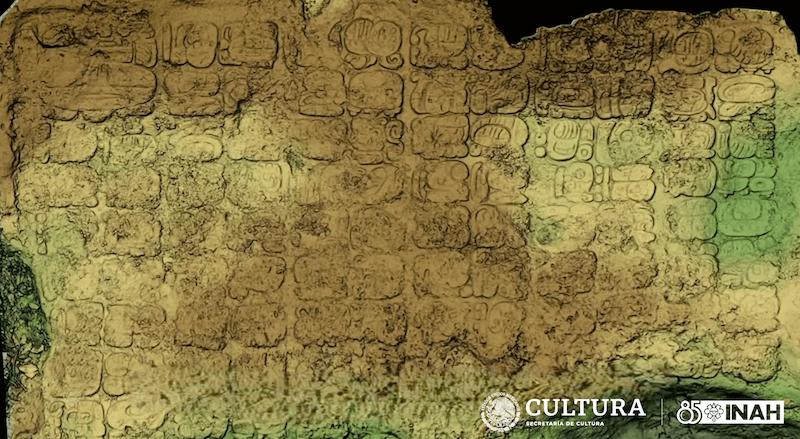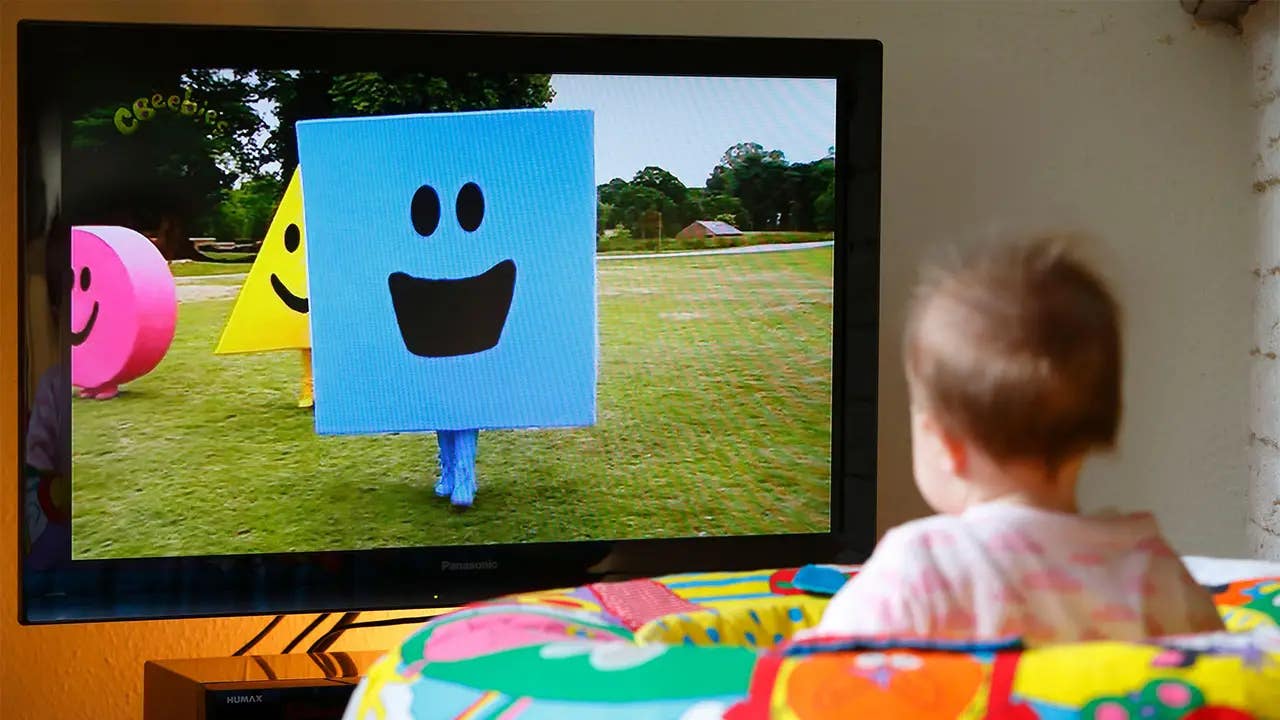Ancient stone discovery could lead to Lost Maya City
Cobá, known as the “City of Choppy Water,” holds secrets of the ancient Mayan civilization, many of which are being unveiled through ongoing work.

Extensive Mayan glyph text discovered in the Cobá Archaeological Zone, Quintana Roo. (CREDIT: Cultura)
In a significant development in archaeological research, a panel inscribed with Mayan hieroglyphics has been recovered from a pool near Nohoch Mul, the tallest pyramid in the Cobá Archaeological Zone in Quintana Roo, Mexico.
This discovery adds to Cobá's long history, which spans over 1,300 years, from 100 BC to 1200 AD. Cobá, known as the "City of Choppy Water," holds secrets of the ancient Mayan civilization, many of which are being unveiled through ongoing work led by Mexico's National Institute of Anthropology and History (INAH).
Diego Prieto Hernández, general director of the INAH, announced the find during a morning conference with Mexican President Andrés Manuel López Obrador. This conference focused on the progress of the Program for the Improvement of Archaeological Zones (Promeza), a program that aims to explore and preserve significant historical sites along the route of Section 5 of the Mayan Train.
During the Promeza excavations in Cobá, archaeologists discovered an L-shaped rock panel with 123 hieroglyphic inscriptions covering over 11 square meters. Located about 160 meters from the Nohoch Mul pyramid, this discovery has provided new insights into Cobá’s history.
Initial studies suggest that the hieroglyphics date back to May 12, 569 AD, marking the founding of a lost city called Keh Witz Nal, or "Deer Mountain." Notably, the inscriptions also revealed the name of a ruler, K'awiil Ch'ak Chéen, a newly identified sovereign who enriches the dynastic history of Cobá.
The discovery further highlights that many rulers of this Mayan city-state adopted the name of the god K'awil, symbolizing their divine attributes as protectors of Cobá. The inscriptions also allude to Bolón Tz'akab Ajaw, the "Lord of countless generations," who is linked to the foundations of both the corn and cocoa dynasties. These elements connect the historical events of the Mayan civilization to its mythical past.
Efforts to protect this artifact from environmental damage have been a crucial part of the Promeza initiative. The rock panel had suffered from exposure to the elements, with soil, salt, and plant growth contributing to its deterioration.
Restoration efforts have included cleaning the panel, injecting lime mortar to strengthen it, and filling external cavities to prevent water accumulation. Additionally, a high-precision recording of the glyphs has allowed researchers to create three-dimensional models, aiding future studies aimed at fully deciphering the text.
The archaeological work at Cobá is part of a broader effort to protect and study significant Mayan sites across the eastern coast of Quintana Roo. In addition to Cobá, six other archaeological locations are benefiting from the Promeza program.
Related Stories
For instance, at El Meco, located near Cancun and Isla Mujeres, research and conservation activities have been completed, with progress being made on infrastructure and interpretive trails. Tulum, another key site, has seen significant advancements, with signage for the Nauyacas and Cresterías architectural groups being the last step to complete.
A new museum, the Museum of the Eastern Coast, is also set to open in Tulum, located in the Jaguar National Park. Scheduled for inauguration in September 2024, the museum will showcase the evolution of Mayan cities along the Caribbean coast, featuring artifacts recovered through Promeza's work. This museum is intended to offer a deeper understanding of the pre-Hispanic Mayan culture and its influences.
In Muyil, conservation and research have uncovered 11 previously hidden structures, which are now open to the public. Efforts to improve infrastructure and signage are underway, with progress at about 30 percent. This initiative aims to make Muyil's historical richness more accessible to visitors.
Similarly, Promeza has helped rediscover Xel-Há, a smaller but culturally rich site. Restoration work here has focused on preserving the site’s delicate mural paintings, and a Visitor Center has been built to enhance the visitor experience.
In the Sian Ka'an Biosphere Reserve, the final phases of signage and interpretive trail installation are ongoing, offering visitors a unique perspective of this natural and archaeological treasure.
Another site benefitting from the Promeza efforts is the Paamul II circuit, where the archaeological zone is integrated with the natural landscape. This project aims to reconcile development—specifically related to Section 5 of the Mayan Train—with the preservation of natural and cultural heritage. The Paamul II site will eventually include four distinct areas: the Archaeological Zone and the Garra Jaguar, Manitas, and Ocho Balas caves.
The Promeza project is not just about excavation; it’s about protection, preservation, and interpretation. By cleaning, restoring, and recording ancient inscriptions, archaeologists ensure that the stories carved in stone continue to speak to future generations. The newly uncovered hieroglyphic panel at Cobá is just one piece of a much larger picture of Mayan civilization, contributing vital information about the history, rulers, and deities of this ancient city-state.
This ongoing effort highlights the significance of preserving cultural heritage and making it accessible. The combined work across the archaeological sites of Quintana Roo not only offers new insights into the Mayan world but also helps you connect with the past through museums, interpretive trails, and well-preserved artifacts.
Promeza's comprehensive approach to studying and safeguarding these archaeological zones is crucial in maintaining the rich legacy of the ancient Maya, blending historical research with the challenges of environmental conservation.
Note: Materials provided above by The Brighter Side of News. Content may be edited for style and length.
Like these kind of feel good stories? Get The Brighter Side of News' newsletter.
Rebecca Shavit
Science & Technology Journalist | Innovation Storyteller
Based in Los Angeles, Rebecca Shavit is a dedicated science and technology journalist who writes for The Brighter Side of News, an online publication committed to highlighting positive and transformative stories from around the world. With a passion for uncovering groundbreaking discoveries and innovations, she brings to light the scientific advancements shaping a better future. Her reporting spans a wide range of topics, from cutting-edge medical breakthroughs and artificial intelligence to green technology and space exploration. With a keen ability to translate complex concepts into engaging and accessible stories, she makes science and innovation relatable to a broad audience.



